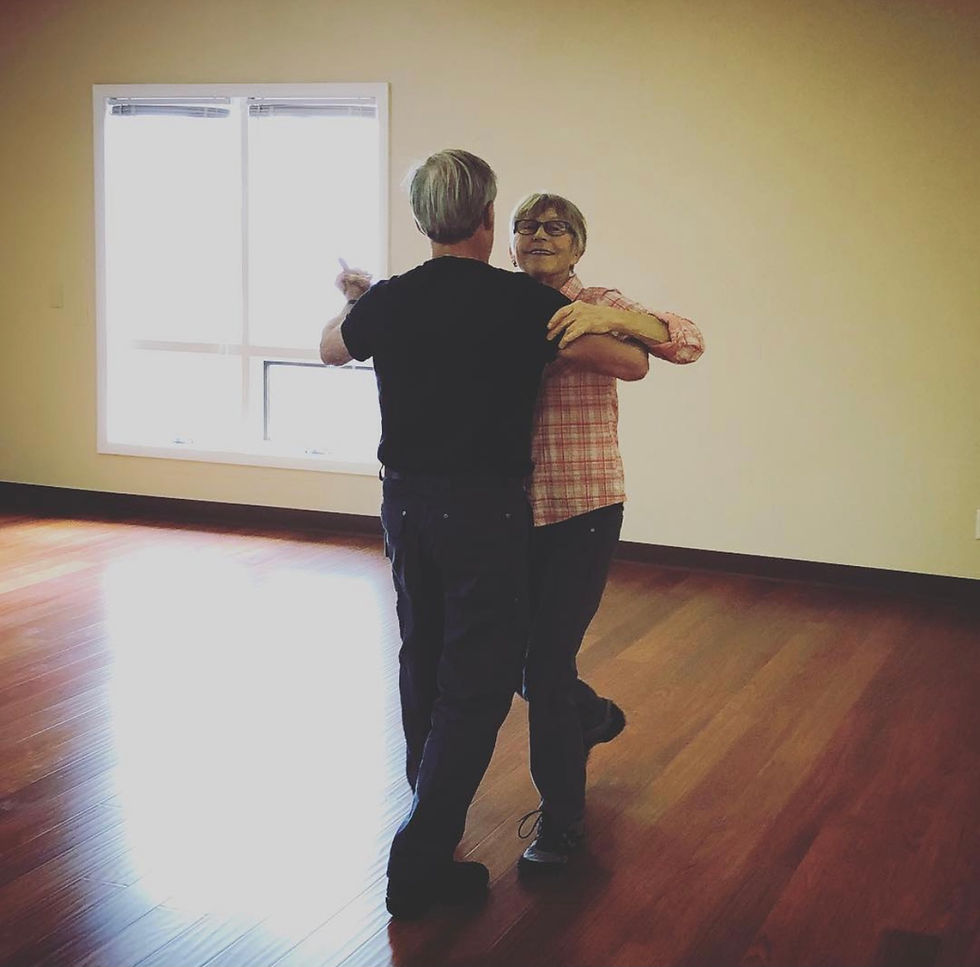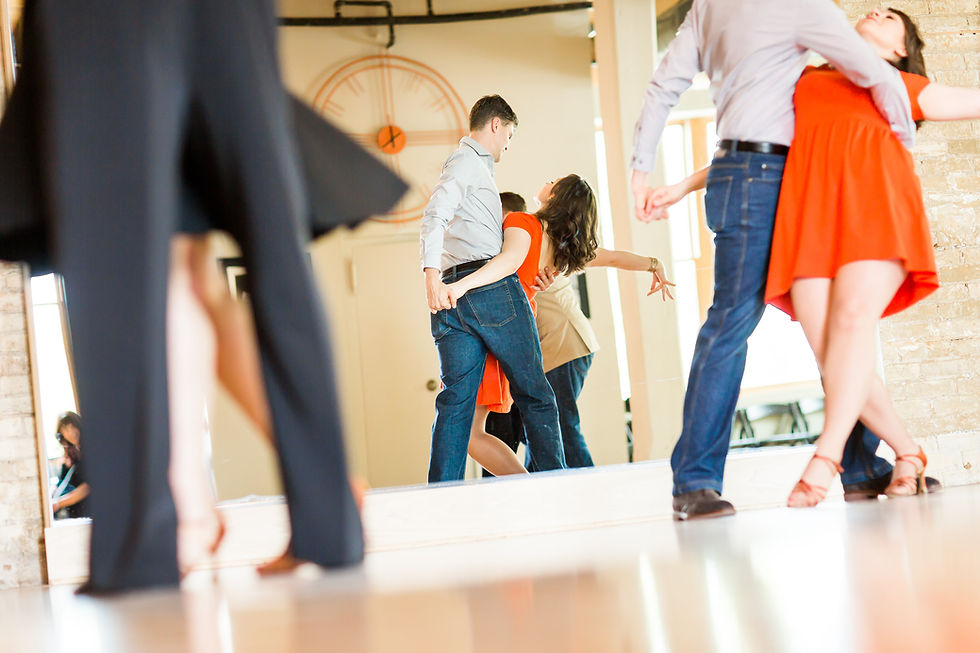5 To Do's and Not to Do's When Practicing with Your Partner
- Samantha Trinidad
- Aug 17, 2020
- 3 min read

After all of my years of teaching, I'm sometimes also called a Marriage Counselor. Dancing with a partner (whether you're married, just friends or complete strangers) can be difficult, but everyone dreams of that perfect partnership where everything is rainbows and butterflies. It is possible to achieve and here are a few tips of what to do and not to do in a partnership in order to get you there. Some of these might be debatable but this is the conclusion I have drawn from my own personal experience. If you don't have a partner, check out my article on How to Practice by Yourself.
To Do's
1. Always treat each other with respect.
Both of you are equals in your partnership whether one is at a higher skill level or not. You are still human beings and deserved to be treated as such.
2. Determine what concepts or ideas you'll be working on.
My partner and I only focus on two dances at a time and only one concept or idea at a time. When you break your practices down to something more simple, you actually get more done. You'll start to master that concept more completely AND you won't overload your brain.
3. Take breaks.
I know that during each practice or coaching session that my brain can only take so much before it's fried. Taking breaks allows me to gather my thoughts and regroup so that I can focus on the task at hand and push myself further. It's also a great way to stretch and get out any kinks that I may be developing. Ballroom dancing can be very asymmetrical in the body and it's important to make yourself symmetrical again to avoid injuries.
4. Stretch/Warm up before practice even begins
Speaking of avoiding injuries, warming up before practice is an excellent way to prevent them. This also gives you the chance to connect to your own body first so that you are ready for the best practice you can give.
5. Practice Separately
I cannot even tell you how many times my partner and I figured things out by just taking a few minutes away from each other to dance our part by ourselves. You should know how to dance figures by yourself so that when you come back to your partner it's even stronger. Need further instruction on how to do this? Check out my post on How to Practice by Yourself.
Not To Do's
1. Tell them what to do
In our effort to try to be helpful, we tell our partner what to do. They get offended or defensive and then an argument breaks out. We all have plenty to do in our own bodies so focus on yourself no matter what and try to resist the urge to correct your partner. See # 2 for further clarification.
2. Ask not what your partner can do for you, but what you can do for your partner.
Just like that good ol' JFK saying, you will be more productive during your practice time if you ask your partner what you can give them more (or less) of rather than blaming them for something going wrong. I cannot even tell you how many arguments my partner and I got into because of this and most of the time we got nowhere!
3. Take practice too seriously.
I am a huge offender of this one and it gets me nowhere. The best practices I have are when I'm working hard but having fun at the same time. This idea makes everyone happy and keeps you productive. And if things get frustrating, remember that's when a small break is needed.
4. Take practice too lightly.
There are some days that I just want to have social chat hour with my partner because we haven't seen each other in like twelve hours and need to catch up on our lives. Don't do it! This is the best way to have a completely unproductive practice. Practice time is set aside for just that. Practice. Schedule some time afterwards or beforehand if you need to vent or just chit chat.
5. Not doing rounds.
Don't know what a round is? It's a sequence of dances danced one right after the other without pausing. (For example: Cha Cha, Rumba, Swing, Bolero, Mambo all danced in a row) This is usually for those who do performance or competitive routines, but can totally apply to those who social dance. For those who social dance, this is a great way for you to just practice with flow and not stopping to pause about what went wrong. For performers, this builds up your stamina and allows you to quickly make the mental switch to a new dance. AND this is great for everyone because it gives you great exercise for a healthy lifestyle. I recommend starting the practice with a round and ending with one.
Hope these tips will help you out during your practice time! Now get practicing!!
-Samantha



Comments